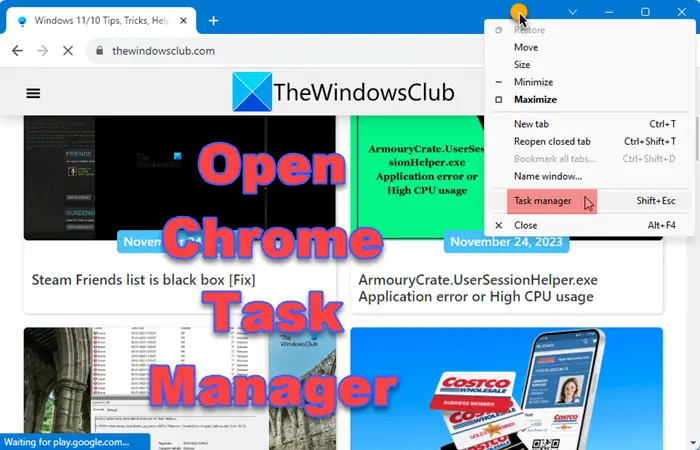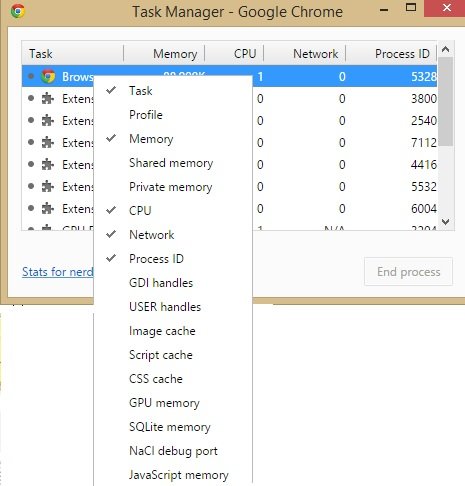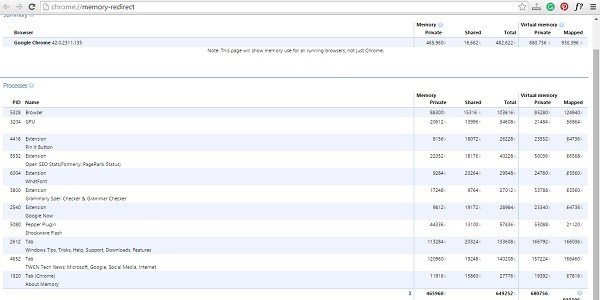In this post, we will show you how to use Chrome Task Manager to monitor the browser’s performance & usage.
How often do you see the phrase ‘Program not responding’ in the title bar of a running program on your Chrome web browser? The message usually means that some of the programs you are running are currently frozen and might have some problems.
In such a situation, all you can do is wait for a few minutes and check if the program starts responding again or open Windows Task Manager and end the program.
How to open Chrome Task Manager

To open the Chrome Task Manager, right-click on the top Tab bar and select Task Manager. You can also launch the Task Manager using the shortcut (Shift+ Esc).
How to use Chrome Task Manager
Google Chrome is the first to introduce a Task Manager for browsers. Not many of us know that this browser has its own Chrome Task Manager, which helps you check if a program is hogging your PC’s resources.
The built-in Task Manager of Chrome also lets you end the not-responding program in a single click.
Chrome’s Task Manager monitors and manages the browser’s resource usage. It displays memory, CPU, and network usage of open tabs and installed extensions, allowing users to identify and terminate processes that slow down the browser.
The Task Manager lists all the programs running on your Windows PC, including the extensions and add-ons installed in your web browsers. Select the one that is consuming the system’s resources the most and click on End Task. The program will be closed immediately, and you can re-launch it if you want.
Furthermore, the built-in Chrome Task Manager also shows other details like Image Cache, Process ID, Script cache, CSS cache, USER Handles, etc, for the programs running on your system. Select any program and hit the right click of your mouse. You can see all the details in a single window.
Read:
- Stop multiple Chrome processes from running
- How do I know which Chrome tab is using the most memory?
Not everyone may know this, but social networking websites hog the maximum of your system’s resources with the image cache, CSS cache, system memory, network usage, constant refreshing, etc.
To close items in Chrome Task Manager, identify and select any unnecessary or resource-heavy processes such as tabs, extensions, or apps. Click on the ‘End process’ button to stop them. Regularly monitor and close non-essential processes to optimize Chrome’s performance and reduce system load.
If you are a nerd, click on ‘Stats for Nerds’ in the lower-left corner of Task Manager, and you can check the stats in depth.

Overall, the built-in Chrome Task Manager is a useful utility that helps users get details about the programs running in their Google Chrome web browser. It helps users to check why their browser suddenly starts running slow or which program running in the background is intimidating the system’s performance.
You may want to read this post if your Google Chrome is Freezing or Crashing frequently.
Also read: How to use Browser Task Manager in Microsoft Edge?
Leave a Reply